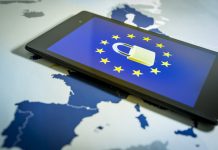Eric Swedersky, SVP Delivery and Public Sector, SecureKey Technologies discusses the potential benefits that blockchain-based identity has as an effective tool to support global innovation and the economy
Following a year of widespread data breaches and the ongoing threat to online data, it’s no surprise that digital identity has evolved as one of the most important issues facing organisations and consumers on a global scale. While the issue is typically looked at in relation to the damaging impact that weak digital identity could have on organisations and their consumers, there is little discussion about the benefits of strong digital identity and its contributions to the global economy.
According to McKinsey Global Institute[1], countries implementing stronger use of digital identity could create economic value equivalent to 3-6% of GDP on average by 2030. The impact this would have is substantial: digital identity has the potential to increase political and social inclusion, facilitate protection of rights and promote transparency – all while driving economic growth that creates value for individuals, governments and businesses, and achieves supreme functionality across industries.
Recognising this shared objective, leaders from government, international organisations and advocacy associations have called for greater cooperation to undertake issues related to digital identity, announcing their commitment to strengthen collective action on this agenda, including at the recent World Economic Forum event, “Globalization 4.0: Shaping a Global Architecture in the Age of the Fourth Industrial Revolution.”
The need for safe, secure and private digital identity is recognised, but the question exists: how can this be done? Beyond putting control of data back into the hands of consumers, advances in authentication technologies could be a game-changer for the global movement of people and goods.
Introducing blockchain-based digital identity
One technology that has risen to the top of the list for innovative things to watch for is blockchain.
At the World Economic Forum event, the Centre for the Fourth Industrial Revolution – a hub for global cooperation to develop policy frameworks – announced it has grown to include more than 100 businesses and companies since 2017. Among a list of nine, one of the Centre’s key areas of focus is blockchain and how to unlock its potential – proving that the technology itself is not just a buzzword.
Leveraging blockchain technology, one way to combat the issues that we’ve seen to date around online data would be to successfully introduce a digital identity ecosystem that combines strengthened authentication capabilities and enhanced individual privacy protection, to provide a more frictionless experience of identity.
By using blockchain technology, citizens and organisations alike can feel certain their data is secure and protected. Distributed ledger technologies (DLT) – blockchain being the most well-known example – ensure that information is never held in one, singular place, but rather is securely managed and always free from the restrictions of centralised databases. This is particularly important for digital identity, as consumers sharing information online can be sure that it will not be stored in one central location and can be shared with the service they are interacting with, without risk of it being exposed publicly.
Developing a streamlined approach
Possibly one of the strongest benefits of digital identity adoption is its ability to streamline administrative processes, benefitting the economic efficiency of any department or service. Organisations can minimise the time spent on tedious tasks, including password resets, customer service calls or entering data from the many forms citizens must fill out in-person for identity records.
The cost of these tasks can be substantial over time. According to the Digital ID & Authentication Council of Canada (DIACC), the average cost at call centres to manage lost, forgotten or stolen passwords equates to $31 per incident.[2] If we presume one incident per working Canadian – and with more than 18 million working Canadians[3] – $585 million is sacrificed annually to lost productive hours.
Digital identity presents a simple solution to this problem – it would allow organisations to reassess and allocate employees’ time by eliminating time-consuming administrative tasks. DIACC estimates that at least 10,000 new jobs will be created as digital identity develops, as a result of new funding and needs.[4]
In addition to organisations, a digital identity platform would benefit customers by allowing them to save time when accessing or providing their personal data and records. Instead of being required to show up to services in-person to produce a physical form of ID, consumers could be provided with a digital ID through a personal device, like their smartphone, that can be shared with services conveniently and securely through a DLT.
Greater citizen empowerment
Through current verification processes, customers often provide services with more personal data than they are required to. Organisations, like financial institutions or government offices, confirm a person’s identity by examining several records and affirming their continuity.
For example, citizens currently use government documents like driver’s licenses or health cards as their method of identification. But in reality, these are not issued to prove identity; a driver’s license proves driving competency, and a health card allows someone to receive health insurance and healthcare. Using these as identification works, but it also provides organisations with unnecessary personal information. By implementing a digital ID, this practice would be unnecessary and in turn, return control of personal data back to the customers.
Reducing oversharing minimizes the risks associated with storing sensitive data. As mentioned above, one of the biggest issues occurring regularly is around digital databases being exposed to hacks and breaches. According to Scalar Decisions, the average number of cyber attacks on individual Canadian organisations is 440 per organisation per year, with three per cent resulting in a breach.[5] That is a massive potential risk and cost burden individual organisations must shoulder – no matter the organisation’s size. By adopting a blockchain-based digital identity ecosystem, there won’t be centralised honeypots of data and organisations can avoid the substantial costs that accompany a data breach.
Collaboration = global economic growth
The next step in achieving a successful digital identity ecosystem is to pursue collaboration between sectors. By ensuring digital IDs work seamlessly across health-care providers, financial institutions, telecommunications providers, government services and more, the system can remove as much friction in identity verification as possible. This ecosystem can be expanded on a global level to meet peak functionality through use of DLT, which wouldn’t face difficulty connecting different providers across multiple countries.
The use of a blockchain-based digital identity ecosystem has already made a huge impact on nations in Europe and Asia. Estonia has the most advanced national ID card system on the planet, replacing travel IDs, health insurance cards and bank account logins and can be used as a digital signature, for online voting and medical prescriptions.[6] Singapore is another country wholly pursuing a national digital identity (NDI) system, with aims to be fully operational in 2020. The NDI will work alongside SingPass, Singapore’s online account management for access to Government e-services, which can be launched through each citizen’s cell phone to access hundreds of digital government services.[7] When public and private sectors collaborate, the potential of truly digital economies is unlocked.
Using digital ID is the best way forward
The introduction of a blockchain-based digital ID system in Canada is strongly supported by the Canadian Bankers Association, echoing opinions from the Bank of Canada, the Bank of England and the Monetary Authority of Singapore. The topic has been a point of focus at several large industry conferences in the past few years, with SecureKey helping to lead the conversation by pioneering digital ID technology. By acknowledging the benefits of and the need for digital identity, industry leaders can begin to work past barriers through collaboration. Identity is having its lightbulb moment, and the introduction of a digital ID system will improve services for customers, businesses and governments for decades to come.
References
[1] https://www.mckinsey.com/featured-insights/innovation-and-growth/The-value-of-digital-ID-for-the-global-economy-and-society
[2] DIACC Digital Identity Innovation Super Cluster Initiative, pg 5.
[3] https://www150.statcan.gc.ca/t1/tbl1/en/tv.action?pid=1410028802
[4] DIACC Digital Identity Innovation Super Cluster Initiative, pg 6.
[5] The Cyber Resilience of Canadian Organization – 2019 Scalar Security Study
[6] https://e-estonia.com/solutions/e-identity/id-card/
[7] http://workspace.unpan.org/sites/Internet/Documents/UNPAN98159.pdf
Eric Swedersky
SVP Delivery
and Public Sector
SecureKey Technologies











